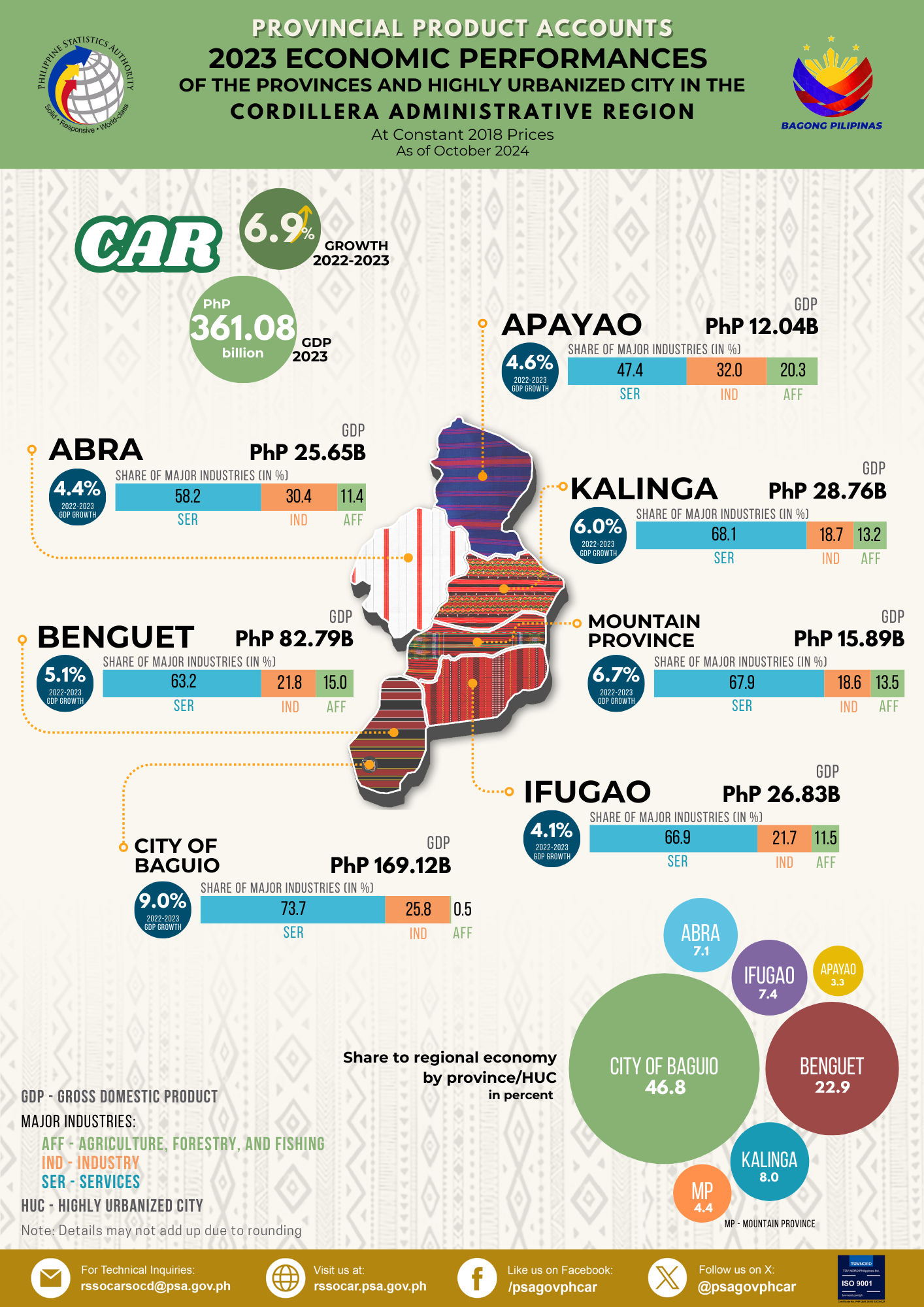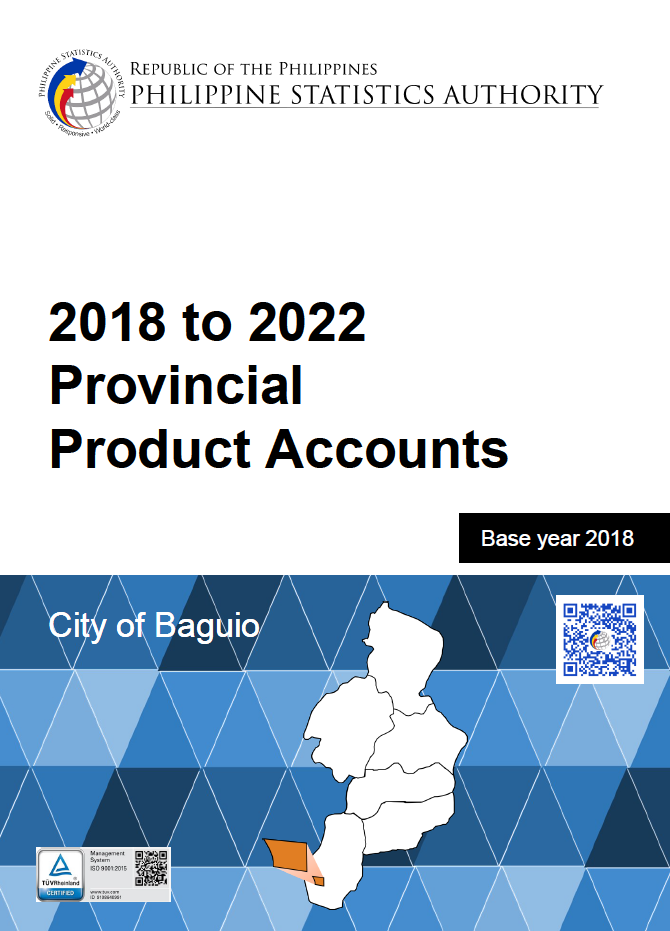The Regional Accounts of the Philippines (RAP) is a mechanism used to measure the economic performance of the region. The levels represent the final value of goods and services produced in the region during the reference period. There are two methods used in measuring regional economic performance – the production approach or the Gross Regional Domestic Product (GRDP) and the expenditure approach of the Gross Regional Domestic Expenditure (GRDE).
This Special Release presents the economic performance of the region using the GRDP. It measures the economic performance of the region from the perspective of the producers of goods and services. It measures the relative contribution of 16 industries classified under three major industries namely: Agriculture, Forestry, and Fishing, Industry, and Services.
Cordillera’s economy accelerates by 8.7 percent
The economy of the Cordillera Administrative Region (CAR) further expanded from the 310.8-billion-peso economic output in 2021 to 337.7 billion pesos in 2022. The estimated economic output of the region in 2022 surpassed the pre-pandemic level by 15.9 billion pesos.
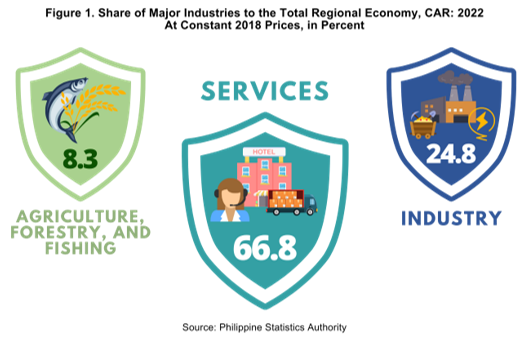
The economy is comprised of three major industries namely: Agriculture, Forestry, and Fishing; Industry; and Services. Among these, Services accounted for more than half of the 337.7-billion-peso economic output of the region with 66.8 percent share. This was followed by Industry with 24.8 percent share and Agriculture, Forestry, and Fishing with 8.3 percent share.
In terms of contribution to the growth of the regional economy, Services remained to be the main driver of the economy with 7.1 percentage points. Industry further accelerated the regional economy by 1.8 percentage points. On the other hand, Agriculture, Forestry, and Fishing slowed down the economy by 0.2 percentage points.
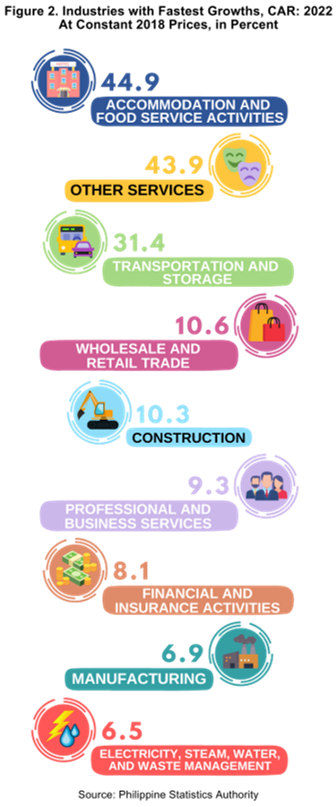
Tourism-tied industries facilitates regional growth
The easing of restrictions and opening of borders played a major role in the road to recovery of various industries in the region in 2022. This was observed in tourism-related industries such as Accommodation and food service activities, which grew by 44.9 percent, the fastest in 2022; Other services grew by 43.9 percent; and Transportation and storage with 31.4 percent growth.
Wholesale and retail trade; repair of motor vehicles and motorcycles further improved by 10.6 percent from the 2.1 percent growth in 2021. With this, it facilitated the growth of the regional economy with 1.9 percentage points, the biggest contributor in 2022.
All the remaining industries recorded growths in 2022 except Mining and quarrying and Agriculture, Forestry, and Fishing that contracted by 0.4 percent and 2.1 percent, respectively.
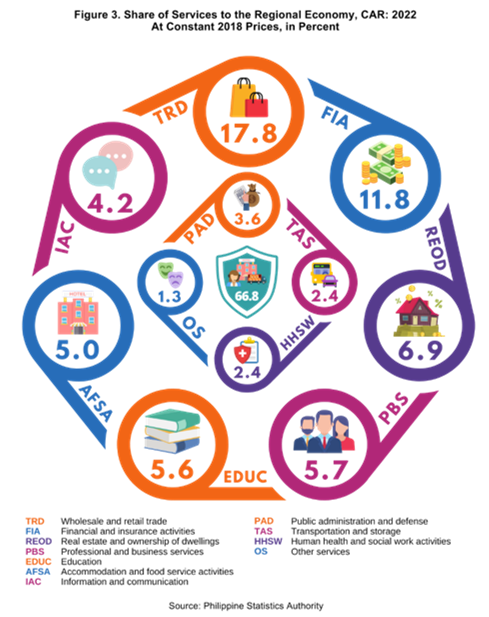
Of the 66.8 percent share of Services, Wholesale and retail trade; repair of motor vehicles and motorcycles accounted for the largest share with 17.8 percent. This was followed by Financial and insurance activities with 11.8 percent, Real estate and ownership of dwellings with 6.9 percent share, Professional and business services with 5.7 percent share, and Education with 5.6 percent share to the total regional economy.
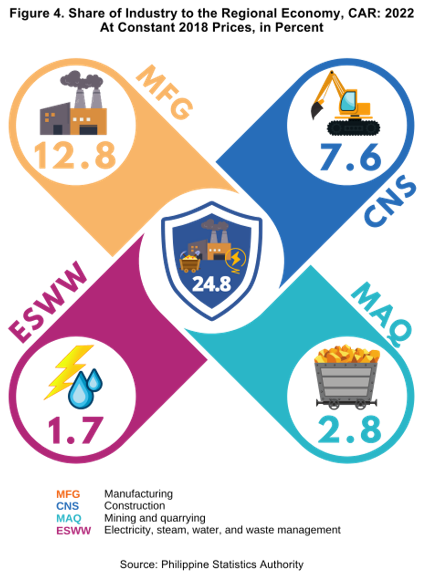
On the other hand, Industry was comprised of Manufacturing with 12.8 percent share, Construction with 7.6 percent, Mining and quarrying with 2.8 percent, and Electricity, steam, water, and waste management with 1.7 percent share.
Trade propels Cordillera economy in 2022
The 8.7 percent growth of the regional economy was mainly driven by Wholesale and retail trade; repair of motor vehicles and motorcycles and Accommodation and food service activities with an accumulated 3.5 percentage point contribution to the growth. Other industries under Services further steered economic growth by 3.6 percentage points.
With this, Services accounted for 7.1 percentage points of the regional growth in 2022. Industry further accelerated the regional economy by 1.8 percentage points. However, Agriculture, Forestry, and Fishing failed to bounce back thus slowing down the economy by 0.2 percentage points.
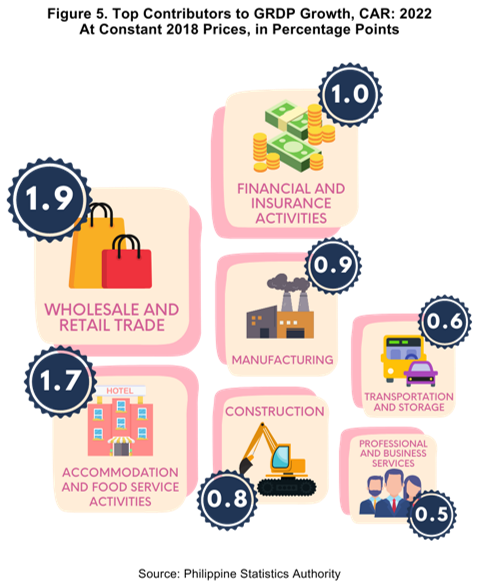
Every Cordilleran contributed PhP 183,827 to regional economy
Per capita GRDP measures how much an individual contributes to the regional economy. At constant 2018 prices, the per capita GDP of the Cordillera, or the total regional GDP levels divided by the total regional population, was estimated at PhP 183,827 in 2022. This was 7.8 percent higher than the PhP 170,496 per capita GRDP estimated in 2021. The per capita GDP of the region in 2022 was higher than the national per capita GDP of PhP 178,751.
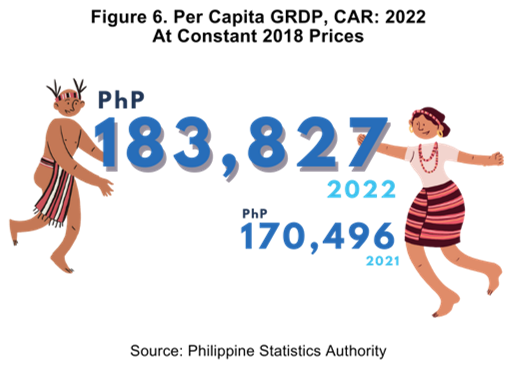
CAR is second fastest growing economy in 2022
All regional economies expanded in 2022. Nine regions recorded growths that were faster than the 7.6 national rate. The economy of Western Visayas grew the fastest with 9.3 percent. Cordillera economy posted the second fastest growth with 8.7 percent. This was followed by Central Luzon, Bicol Region, and Davao Region with 8.1 percent growths, respectively.
(SGD)
VILLAFE P. ALIBUYOG
Regional Director
_________________________________________________
TECHNICAL NOTES
The Gross Regional Domestic Product (GRDP) is the aggregate of Gross Value Added (GVA) of all resident producer units in the region. It is an indicator that measures the size of the economy of the region. The GRDP includes estimates on the three major industries including their sub-industries are compiled and released annually. These are valued at current and constant 2018 prices. The GRDP at constant 2018 prices or the real GRDP is useful in capturing real output growth since inflationary effects have been removed.
The GRDP estimation follows the top-to-bottom approach estimation in which the national level estimates serve as control totals by industry. These are allocated to the regions using results of surveys and administrative-based data/indicators for its regional distribution.
The GRDP classification by industry adopts the 2009 Philippine Standard Industrial Classification (2009 PSIC). This configuration is also revised in the overall revision and rebasing to highlight additional industries, which are Information and Communication, Accommodation and Food Service Activities, Professional and Business Services, Education, and Human Health and Social Work Activities.
A. Agriculture, Forestry, and Fishing
B. Industry
1. Mining and quarrying
2. Manufacturing
3. Electricity, steam, water, and waste management
4. Construction
C. Services
1. Wholesale and retail trade; repair of motor vehicles and motorcycles
2. Transportation and storage
3. Accommodation and food service activities
4. Information and communication
5. Financial and insurance activities
6. Real estate and ownership of dwellings
7. Professional and business services
8. Public administration and defense; compulsory social activities
9. Education
10. Human health and social work activities
11. Other services



